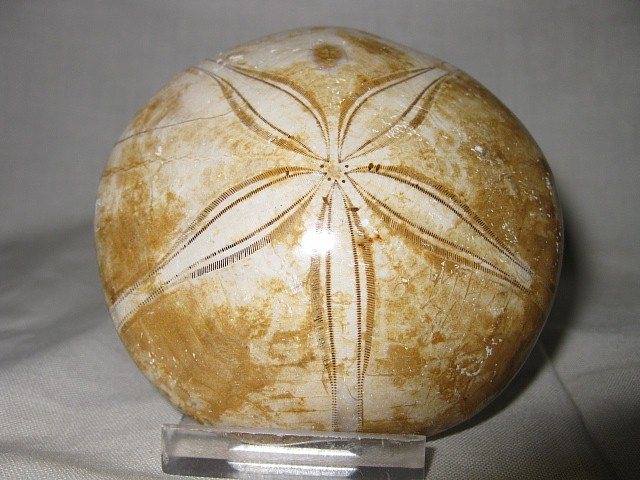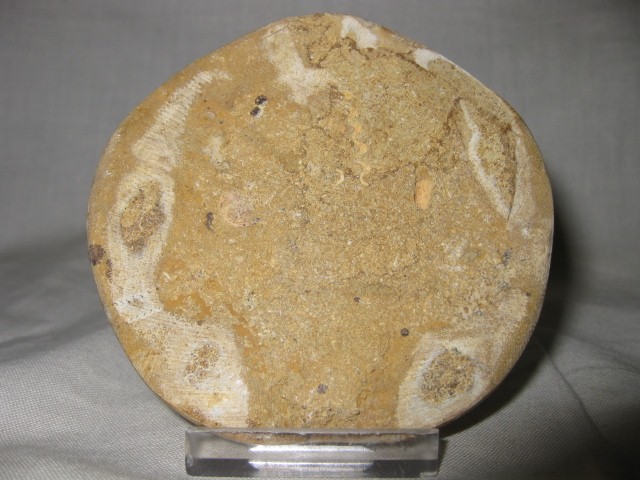Description
- Holectypus depressus
- Jurassic ~ Cretaceous Age
- Lagniro Formation
- Madagascar
- Specimen measures approx. 3 1/8″ wide
Holectypus was a genus of extinct echinoids, animals much like the modern sea urchins and sand dollars, found as fossils exclusively in marine rocks of Jurassic to Cretaceous age (between 200 million and 65.5 million years ago). Holectypus was bun shaped with a flat bottom and arched back.
Echinoids are one of the more diverse and successful echinoderm groups today, including familiar echinoderms such as the sea urchins and sand dollars. The roe (egg mass) of some species, notably certain sea urchins, is eaten in some cultures, notably in Japanese sushi; as a result, certain echinoid species are commercially fished. The larval development of echinoids has also been studied extensively, and many discoveries in developmental biology have been made using echinoids. Echinoids also have a substantial fossil record.
In echinoids, the skeleton is almost always made up of tightly interlocking plates that form a rigid structure or test — in contrast with the more flexible skeletal arrangements of starfish, brittle stars, and sea cucumbers. Test shapes range from nearly globular, as in some sea urchins, to highly flattened, as in sand dollars. Living echinoids are covered with spines, which are movable and anchored in sockets in the test. These spines may be long and prominent, as in typical sea urchins. In sand dollars and heart urchins, however, the spines are very short and form an almost felt-like covering. The mouth of most echinoids is provided with five hard teeth arranged in a circlet, forming an apparatus known as Aristotle’s lantern.
Echinoids are classified by the symmetry of the test, the number and arrangement of plate rows making up the test, and the number and arrangement of respiratory pore rows called petals Traditionally, echinoids have been divided into two subgroups: regular echinoids, with nearly perfect pentameral (five-part) symmetry; and irregular echinoids with altered symmetry. Regular echinoids include the Cidaroida (pencil urchins) and Echinoida (sea urchins, including the long-spined sea urchin shown above left). The Clypeasteroida (sand dollars and sea biscuits, above center), the Spatangoida (heart urchins, including Brissus laticarinatus shown above right), and the Cassiduloida, a somewhat sand-dollar-like group whose members are rare today, make up the irregular echinoids.
Because most echinoids have rigid tests, their ability to fossilize is greater than that of more delicate echinoderms such as starfish, and they are common fossils in many deposits. The oldest echinoids, belonging to an extinct regular taxon called the Echinocystitoidea, appear in the fossil record in the late Ordovician. Cidaroids or pencil urchins appear in the Mississippian (Early Carboniferous) and were the only echinoids to survive the mass extinction at the Permo-Triassic boundary. Echinoids did not become particularly diverse until well after the Permo- Triassic mass extinction. True sea urchins first appear in the late Triassic, cassiduloids in the Jurassic, and spatangoids or heart urchins in the Cretaceous. Sand dollars, a common and diverse group today, do not even appear in the fossil record at all until the Paleocene.





